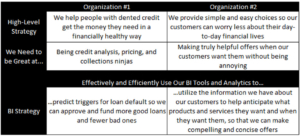c. myers live – An Insightful Conversation About Inflation
Top of mind for many decision-makers is the topic of inflation. While there is a lot of uncertainty around the topic, the key is in the discussion. In this c. myers live, we dive into discussions your team can be having around inflation and its impact on the financial industry, and why it is important to plan for a range of outcomes.
To read more about inflation and interest rate risk, check out this blog.
Rob, one of five c. myers owners, has a reputation for deep, original thinking on asset/liability management and every conceivable modeling methodology, as well as analysis of investments, liquidity, aggregate risk, concentration risk, and other related topics. While Rob is a familiar face to the managements and boards of many of the largest credit unions, he has helped credit unions of all sizes tackle some of their toughest challenges, such as rebuilding capital and navigating safely and soundly with the smallest of margins. He has become quite familiar to many leaders in the regulatory world, both as an educator and a thought leader.
 Since Dave joined c. myers in 2005, he has become well-known and well-respected by scores of credit unions in every corner of the country. Dave has worked on many complex modeling and consulting projects that c. myers has undertaken – he is always looking for a challenge. He most enjoys facilitating sessions for management teams as they work to make tough financial decisions, while at the same time running “what-ifs,” real-time, to help inform decision-making.
Since Dave joined c. myers in 2005, he has become well-known and well-respected by scores of credit unions in every corner of the country. Dave has worked on many complex modeling and consulting projects that c. myers has undertaken – he is always looking for a challenge. He most enjoys facilitating sessions for management teams as they work to make tough financial decisions, while at the same time running “what-ifs,” real-time, to help inform decision-making.




